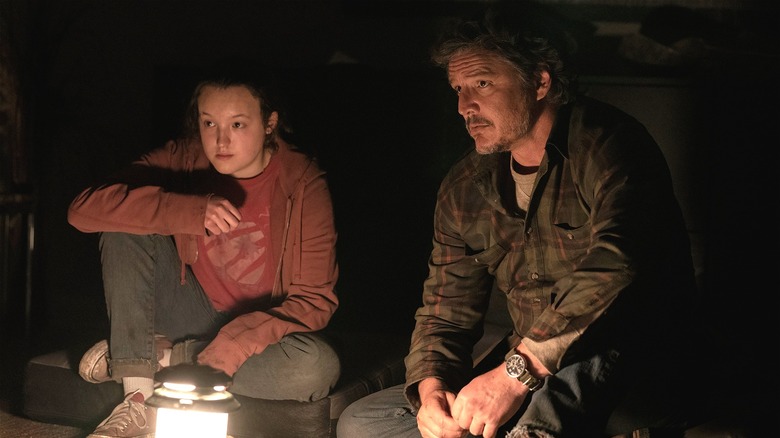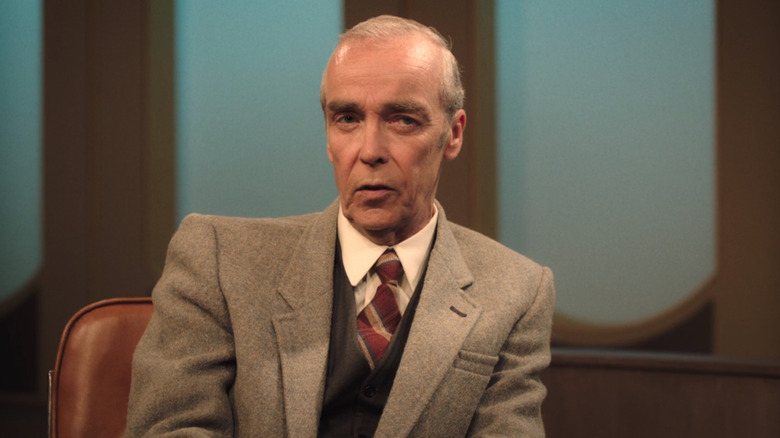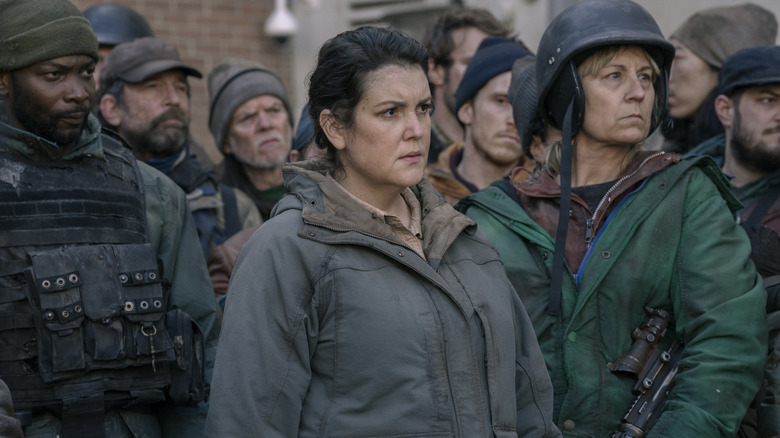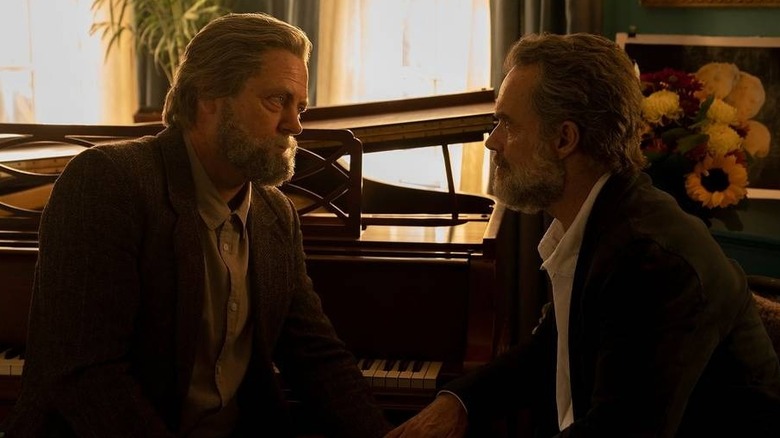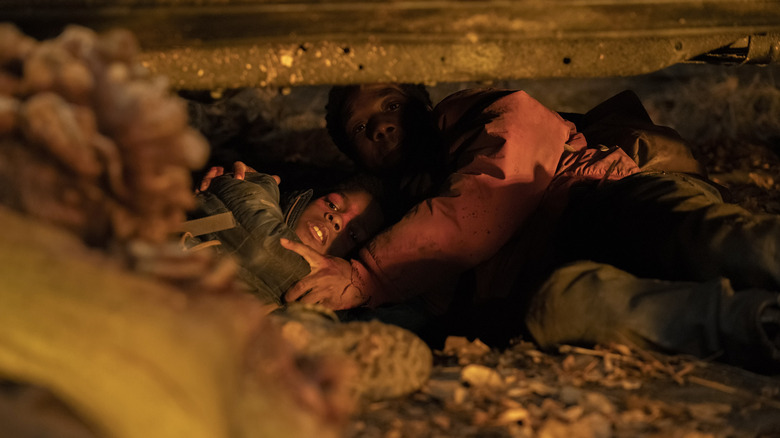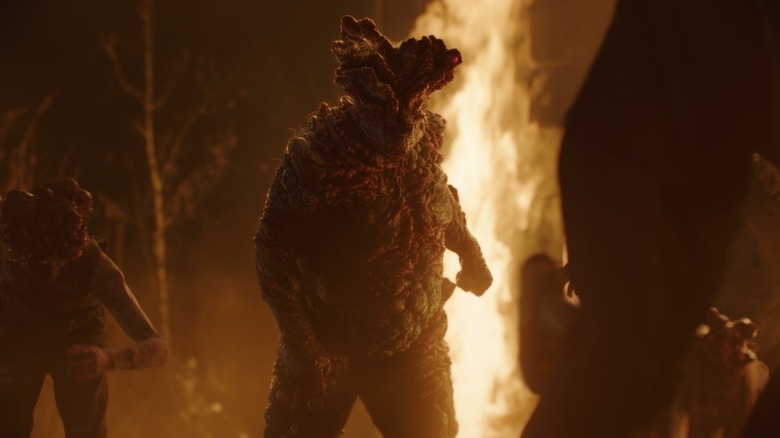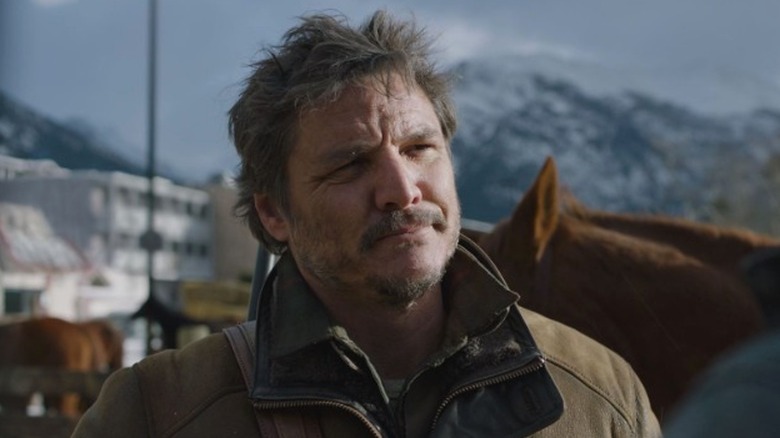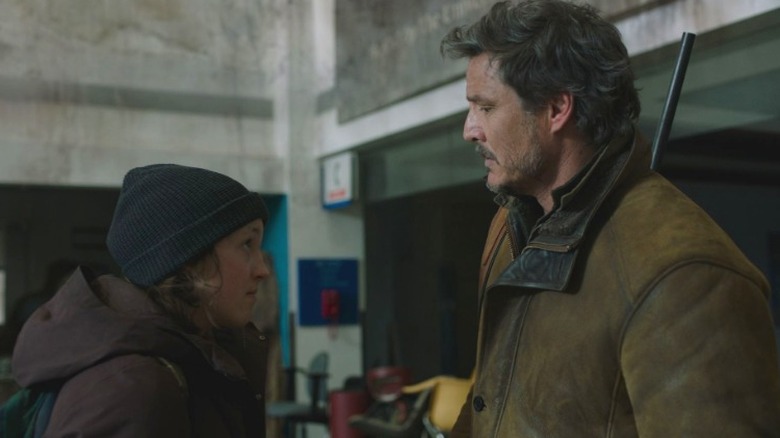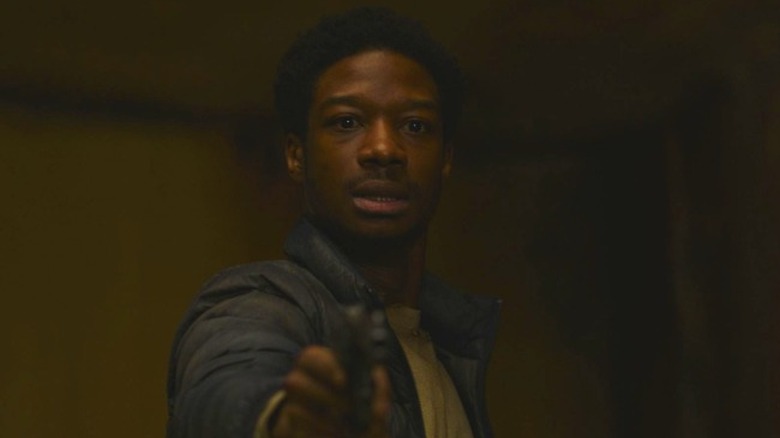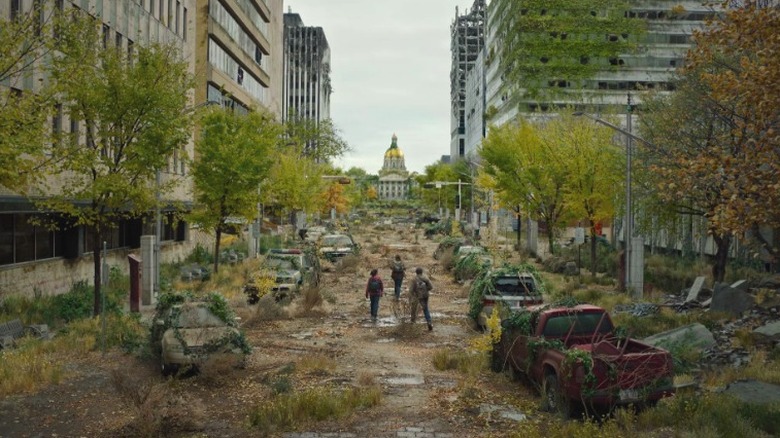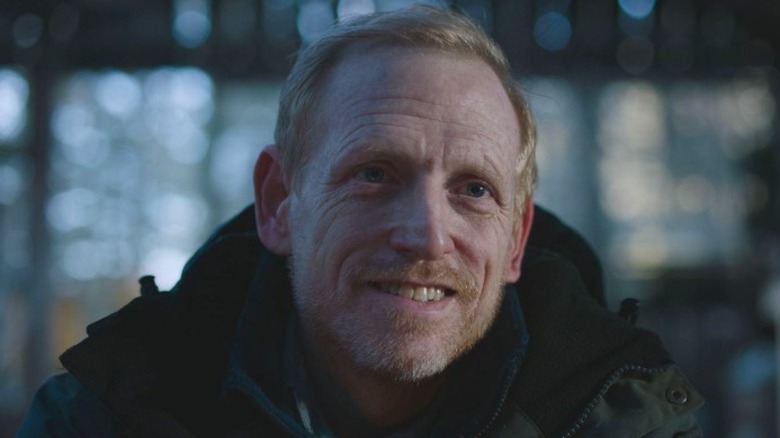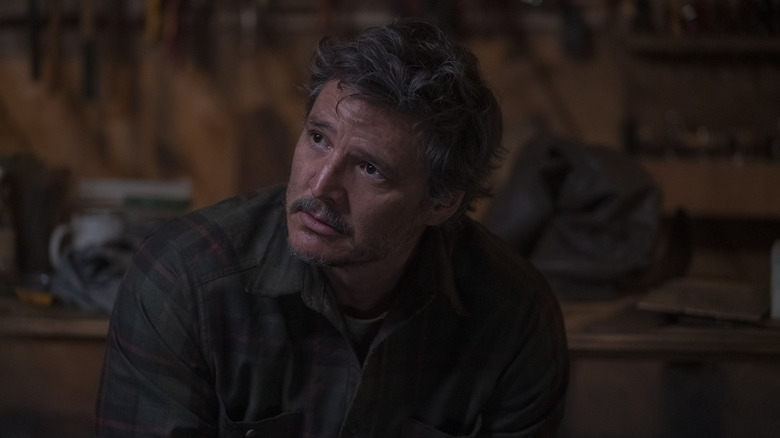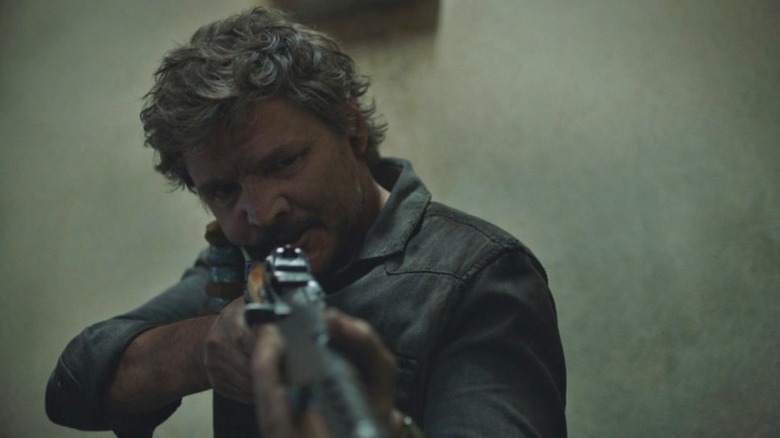The 6 Best And 6 Worst Things In The Last Of Us Season 1
The highly anticipated "The Last of Us" made its HBO Max debut in January of 2023 to critical and audience praise. Each episode left audiences thrilled, emotionally moved, and sometimes terrified. This isn't surprising considering how much effort was put into the production of the series. "The Last of Us," is an adaptation of the successful game of the same name developed by Naughty Dog, but the show was created by director and writer Craig Mazin, creator of HBO's "Chernobyl," one of the most acclaimed TV shows in recent times. He was accompanied by Neil Druckmann, the man responsible for writing the original game.
From January to March, millions of people around the world came together to watch the show. Viewers have talked about the chemistry between protagonists Pedro Pascal and Bella Ramsey, the excellent special effects, and the compelling stories told in each episode. However, as positively as the show was received, it wasn't without criticism. People have mentioned, for example, how the effectiveness of the body horror elements made the series difficult to watch. The show is also not free of inconsistent writing or characters with either great or terrible luck. And while the TV series isn't perfect, there is still plenty about it to love. Here are the 6 best and 6 worst things in "The Last of Us" Season 1.
Best: The opening scene makes exposition fun
One of the most basic rules critics like to remember is that, when it comes to visual media, showing something is better than just saying it. A common mistake in movies, for example, is to explain something by having a character introduce a lot of complex terminology and ideas in a way that confuses the audience and breaks the pace of the story.
"The Last of Us," however, purposely chooses a particularly boring setting to make their exposition — an old TV science debate about viruses and fungus and, surprisingly, it works. The writers turn the presentation of two scientists discussing the threat of microscopic lifeforms into a story. Dr. Schoenheiss (Christopher Heyerdahl) talks about the threat of viruses, which more viewers (due to the last pandemic), would be very familiar with, making it easy to understand. The second expert, Dr. Neuman (John Hannah) however, focuses on a seemingly harmless life form: fungi.
He describes his unique and fascinating physiology, only to then reveal terrifying but real aspects of it. First, it can control the body of other beings like bugs and turn them into puppets, and second, if the temperature were to increase and they were able to adapt to survive in human bodies, there wouldn't be a way to fight them. The camera then turns to the terrified and speechless audiences, leaving viewers with a similar realization regarding the vulnerability of humanity itself.
Worst: Joel and Ellie arrive in Kansas at the exact time a coup takes place
At the beginning of the pandemic, survivors were redirected to quarantine zones. These were fortified sections of cities designed to test inhabitants, prevent them from getting sick, and provide them with food, shelter, and education. As resources become scarce and the lack of control from a central government becomes evident, the quarantine zones managed by members of the Federal Disaster Response Agency become increasingly authoritarian. They brutally repress their citizens and will use the limited food and medicine to force people into revealing any potential agents of rebellious groups. Despite this, many of these quarantine zones have managed to endure people's discontent for two decades.
Joel (Pascal) and Ellie's (Ramsey) arrival in Kansas City coincides with a successful coup in the local quarantine zone. This is not something unlikely, as characters have talked about similar settlements getting disbanded or destroyed. What's surprising though is that, after 20 years of rule, the protagonist happens to arrive in the city only a few days after FEDRA has been removed from power and the rebels are putting all their efforts into finding the remaining people who collaborated with the government. The setting is an effective way to place Joel and Ellie in the path of danger, meet interesting characters, and face an unexpectedly cruel leader. But the fact that they just happen to arrive at the wrong place at the wrong time makes the events a bit less believable.
Best: 'Long, Long Time' tells a surprisingly compelling love story in only 45 minutes
When people first started to watch "The Last of Us," they probably expected another depressive post-apocalyptic tale. Unsurprisingly, it has various moments like that, but the show also dedicates several scenes to help viewers build a clear image of the world where the story takes place. For this, writers use different techniques, from flashbacks of researchers discovering the first victims of the pandemic, to Tess (Anna Torv) explaining to Ellie how the infected communicate through an underground network.
What most probably didn't expect, was the series to take a detour to explain how relationships could also emerge in this dangerous world. Episode 3 ("Long, Long Time") tells the story of Bill (Nick Offerman), a socially awkward but adept survivalist who turns his neighborhood into an almost entirely self-sufficient fortress. Bill meets Frank (Murray Bartlett), a kind man from Baltimore looking for a place to stay. Soon, Bill and Frank fall in love and develop a strong relationship, learning from and taking care of each other for years.
Their story is full of tender demonstrations of affection, but also a sad ending that sees Frank falling ill, and both men accepting the fact that they don't have a lot of time left. The segment tells in 45 minutes a more compelling love story than most movies and TV series manage to portray in hours, making this one of the most memorable episodes of the show.
Worst: The body horror elements were so effective it made the show hard to watch
Probably the first thing viewers would notice about "The Last of Us" is its production value. The realism of the wardrobe, outdoor shots, and makeup stands out in comparison with most present-day TV series. Having said that, when it comes to recreating a post-apocalyptic world populated by zombie-like creatures, the directors have to find a balance between presenting a believable world to audiences and making it so realistic that it elicits too much disgust and fear among viewers.
It could be argued that "The Last of Us" does such a great job at creating an effective body horror show that it makes some scenes hard to watch. In one of the flashbacks, for example, we see a cordyceps expert from Jakarta performing an autopsy on one of the first victims, discovering that fungi-like tissue has invaded the insides of the victim's leg, while tentacles emerge from its mouth.
The issue doesn't end with this scene, as many of the makeup and visual effects that went on to create the infected have triggered people's trypophobia, an eerie and disgusting sensation produced by seeing hole-like features in a living body, like textures similar to sponges or lotus seed pods. People have gone as far as to complain on websites like Reddit about how this feeling affected their experience, an unexpected side effect that should probably be considered when the second season goes into production.
Best: The infected implosion was an exhilarating and unexpected sequence
For a show about a zombie apocalypse, the writers of "The Last of Us" showed a lot of self-restraint when it came to using the infected as a plot device. The creatures are slowly introduced, going from getting a glimpse at a deceased Clicker, to a distant view of hundreds of infected reacting like a hive mind to stimuli. After Joel, Tess, and Ellie have their first close encounter, the show focuses more on human threats like FEDRA and raiders. Infected take a secondary role, that is, until their explosive return in Episode 5.
"Endure and Survive" finds Joel and Ellie joining the efforts of a former FEDRA collaborator, Henry (Lamar Johnson), to escape Kansas City. The only issue is that they are being followed by a group of violent rebels who took over the local quarantine zone and are on a mission to eliminate every last person who helped FEDRA. In their desperation, their forces bring dozens of armed men to an apparently empty neighborhood where they corner Henry
As they prepare to kill him, one of her trucks starts to slowly disappear into a sinkhole, revealing a massive amount of infected escaping from the underground tunnels. The terrifying sequence shows the leader of the army succumbing to the creatures, and a Bloater tearing his second in command apart, demonstrating that even powerful armed groups can't take their safety and even the soil they are standing on for granted.
Worst: Joel changed his opinion about letting Tommy take his place too quickly
Joel and Ellie have to endure attacks from infected raiders, a lack of resources, and cold weather. But through their victories such as outsmarting an angry mob, as well as gradually sharing more about themselves during their journey, they don't just become an efficient team, but also develop a father-daughter relationship. Something that makes one of Joel's choices a bit surprising.
During his stay in Tommy's (Gabriel Luna) settlement, Joel realizes that he's not the strong and sharp man he used to be. His age is starting to take a toll, and he sees himself as more of a burden than a helpful companion to Ellie. This is why he decides to share with Tommy that Ellie is immune to cordyceps and that she needs to get to the Fireflies so that they can develop a cure for the infection.
This makes sense as Tommy is younger and skillful, but it's very hard on Ellie, who finds herself forced to abandon the man that has managed to make her feel safe in a world full of threats. However, right before Tommy and Ellie depart, Joel reappears and takes Tommy's place. His motivation is obvious: he's too worried to leave Ellie. But his decision feels like something that comes out of nowhere, especially after he made such an effort to explain why it was better for everyone that he didn't continue as Ellie's personal bodyguard.
Best: The chemistry between Joel and Ellie is what makes the story so captivating
"The Last of Us" revolves around survival. People are constantly trying to overcome seemingly impossible challenges and return to something that resembles a normal life. Where the series surpasses previous productions in the genre, however, is in its capacity to tell an engaging story about a pair of survivors. "The Last of Us," for example, focuses on the father-daughter relationship that develops between Joel and Ellie, who learn to trust each other and forgive themselves for their past actions. These story arcs wouldn't be enough to attract such a positive response though if audiences didn't like the characters to begin with.
People continue to watch because they care about what happens to the protagonists. They want to see Ellie and Joel overcome every obstacle they find, help people in need, and finally achieve their personal dreams. To do this, the show gradually presents the characters interacting in non-threatening situations like telling each other jokes, driving in a car for the first time, or interacting with a group of friendly giraffes that probably escaped from a zoo.
The everyday conversations that Ellie and Joel engage in are not as unimportant as they might seem. They are in fact an essential component that makes audiences slowly care for the characters. As a result, every threat, victory, and defeat becomes more engaging, making it very difficult to stop watching before finding out the ultimate fate of the protagonists.
Worst: It didn't make sense that Ellie kept her knowledge of Sam's bite from Henry and Joel
Despite her age, Ellie seems to be a rather clever teenager. She is capable of understanding plans, and stakes, and quickly acquiring survival skills like how to remain undetected by raiders and infected, hunt her own food, or even use the tendency of strangers to underestimate her to their advantage. These skills allow the pair to escape multiple dangers, but it doesn't prevent Ellie from avoiding a preventable threat that puts both Ellie and Joel in danger.
In Episode 5 ("Endure and Survive"), Ellie and Joel manage to escape a rampaging wave of infected in Kansas City with a survivor named Henry and a child called Sam (Keivonn Woodard). They find an old hostel and decide to spend the night there. During their stay, Ellie discovers that Sam was bitten by an infected. Instead of revealing this information to Joel and Henry, she tells Sam that her blood contains the cure, and proceeds to rub Sam's wound with it.
Ellie then tries to stay awake but falls asleep, only to find Sam has turned. Her attitude is hopeful but contrasts with the levels of maturity that she has shown before. In addition, she could have told Joel and Henry about Sam without appearing unsympathetic toward the doomed child. In the end, Ellie's sudden naivety almost gets her killed, and forces Henry to shoot Sam in order to save her.
Best: The special effects helped make the world more immersive
A big-budget production like "The Last of Us" may rely on good writing and performances to capture audiences' attention, but this could easily be lost if the special effects weren't convincing. In contrast with current trends in movies though, "The Last of Us" shows high production value not just in regards to its cinematography, editing, and soundtrack, but also in the area of visual effects. The outdoor shots, most of which take place during the day, are surprisingly convincing, something particularly important in a story about a journey across a post-apocalyptic version of America. But this isn't the only aspect in which the visuals stand out.
The visual effects and makeup do a great job of introducing audiences to a type of infected they have seen before on TV. The way the infected move may be similar to other shows like "The Walking Dead," but the make-up and visual effects make it extremely clear these are not zombies. Each infected is a one-man body horror show that hides in the shadows and runs desperately towards the protagonist, trying to turn them into another host. The result is a series that allows viewers to immerse in their terrifying world, making them feel like they are exploring the abandoned facilities of a university in Colorado, or trying not to be heard by a group of infected inside a dark building.
Worst: Audiences didn't get to see the priest being unmasked and punished by his followers
Throughout the series, Joel and Ellie encounter several despicable individuals. They have to deal with armed forces that don't hesitate to use physical punishment, revolutionaries with an insatiable thirst for revenge, and raiders using trickery to kill their next victim. However, nobody compares to David (Scott Shepherd), a preacher and leader of a group struggling to survive during a harsh winter. David is introduced as a strict but benevolent leader who is just trying to do everything necessary to ensure the safety of his community.
But when David and one of his followers find Ellie, his behavior changes. He offers Ellie a place knowing that they are having trouble finding food and that her partner is responsible for the death of one of his friends. The audience later discovers the terrible reasons for his unusual attitude — David has been feeding his community with human meat.
Not only that, he sees Ellie as a potential romantic partner, threatening her with murder if she refuses. While Ellie manages to escape and stab the man to death after he tries to assault her, it feels that his punishment deserved to be even bigger. It would have been even more cathartic to have his followers discover that he had turned them into cannibals and that he was a child predator, forcing him to confront the community he had been manipulating for such a long time.
Best: Joel's opening up to Tommy clarifies the purpose of his journey
In Episode 6 ("Kin") Joel is finally reunited with his brother, Tommy, who is living in a well-organized settlement in Wyoming. After the initial feeling of relief after making sure he's fine, Joel can't help but show resentment due to Tommy not making any attempts at contacting him. Even after learning that he didn't make contact through the radio to protect the community from raiders and that he is now married and expecting a child, Joel is still filled with anger toward his brother. However, it's during an intimate conversation that the brothers start rebuilding their relationship.
When Tommy confronts his brother about his attitude, Joel reveals the true purpose of his journey — Ellie is immune to the cordyceps, and he's taking her to a medical facility run by the Fireflies in order to study her and, potentially, make a vaccine. Joel's voice breaks when mentioning that he sees this effort not just as a way to possibly stop the illness that has decimated humanity, but also as a way to redeem himself for every bad thing he has done. The conversation shows for the first time how guilty Joel truly feels, portraying him both as a man with a terrible past, but also as someone who is willing to risk his life in order to atone for it.
Worst: Joel's final rampage against an army of Fireflies is entertaining but unrealistic
Joel is a man trying to overcome the loss of his daughter under violent circumstances and has seemingly responded to the world in a similar manner. Throughout the series, characters make references to how much he is feared, and how many people he has killed. His story becomes one of redemption when he finds Ellie, in which he sees a way to save millions of lives and, possibly, give something back to humanity after everything he feels he has taken. But the bond between him and Ellie will, ironically, become an obstacle to this.
Towards the end, Joel seems to have made a lot of progress. He talks with Ellie more openly about his daughter, and even confesses that he is the one responsible for his bullet injury. But when they arrive at the Fireflies facilities and it becomes evident that Ellie won't survive the procedure necessary to synthesize a vaccine, Joel loses it. In his desperation to avoid reliving the loss of a daughter, the man haunted by a violent temper re-emerges and decimates the Fireflies. The sequence is engaging although a bit hard to believe. Where previous episodes show Joel struggling to overcome an attack from a few men, this time he resembles a 1980s action hero. He has a perfect aim and triumphs not because he has the necessary skills and equipment, but simply because the script needs him to.
